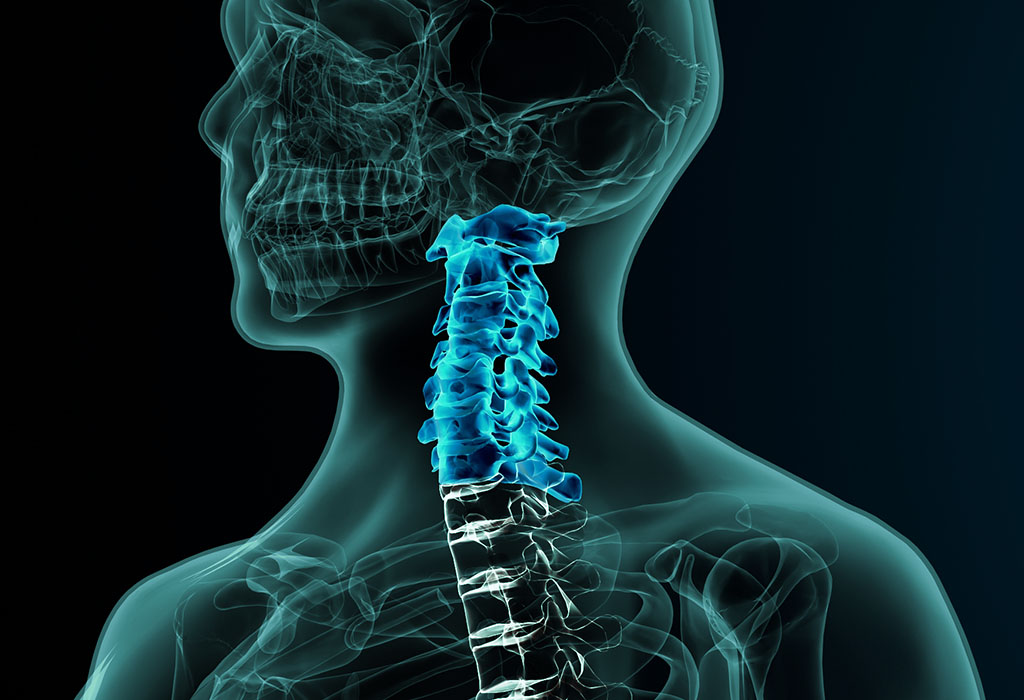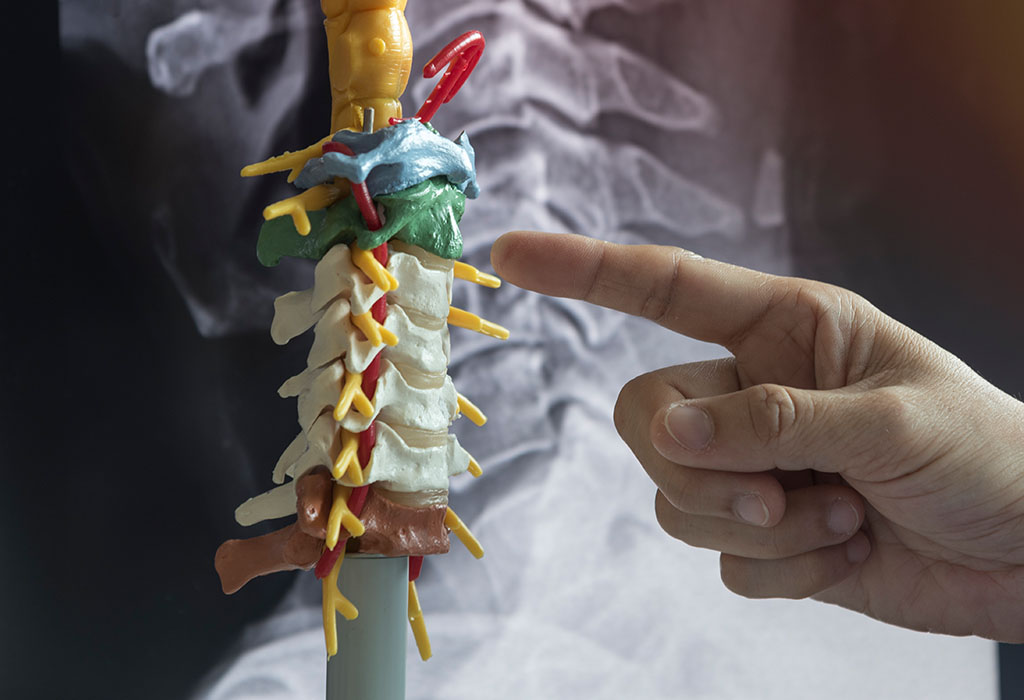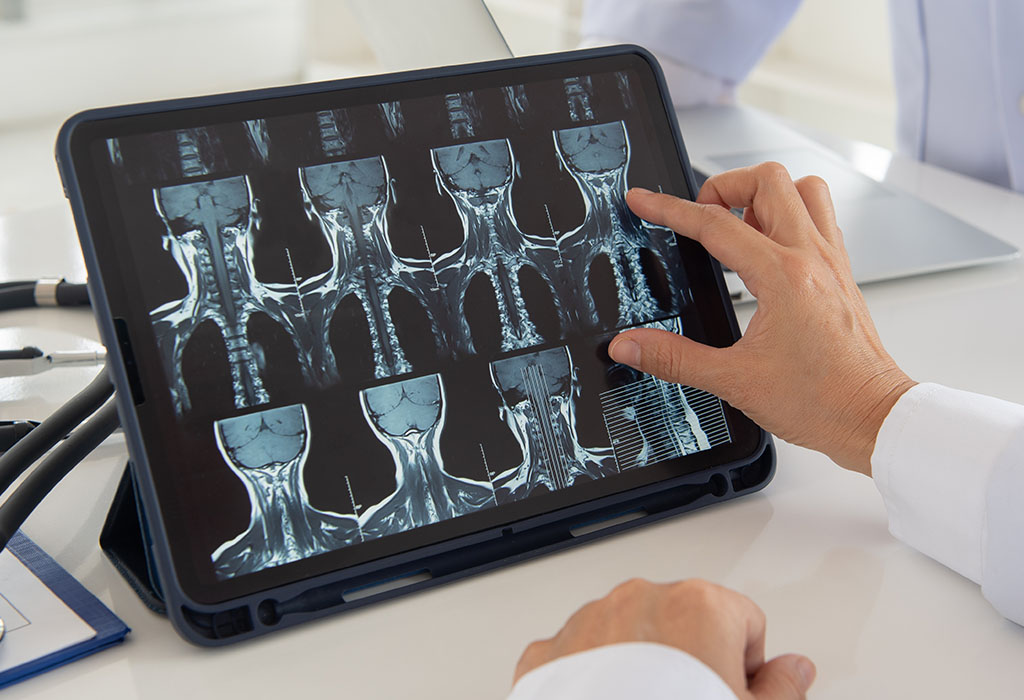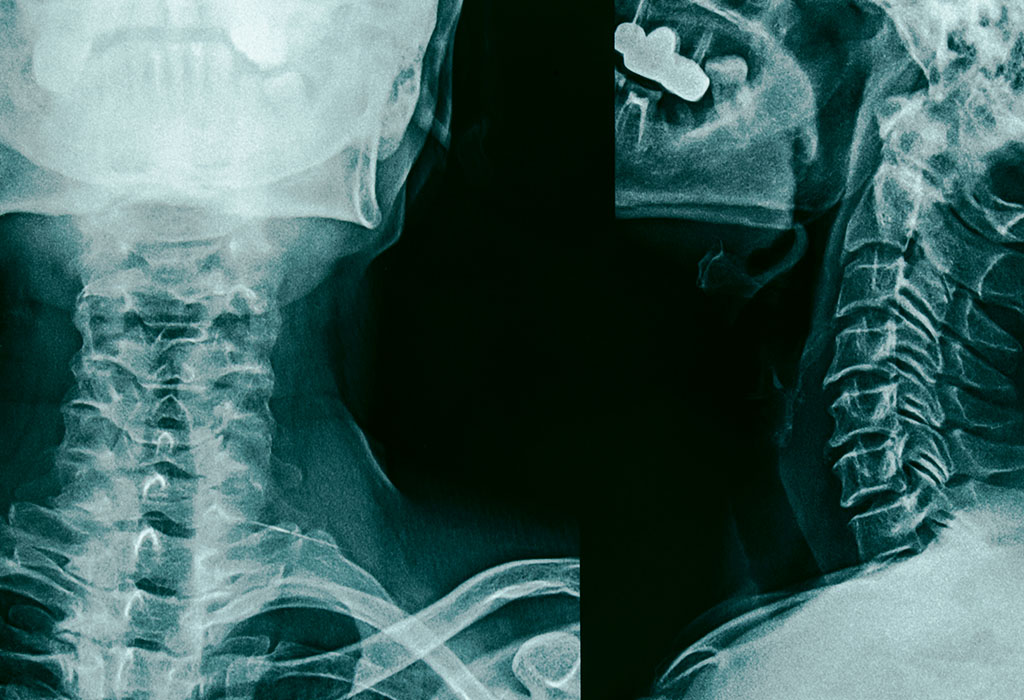
Conditions
As a cervical spine specialist, Dr. Wright has performed more than 2,500 cervical spine surgeries. He is considered one of the leading experts in the field and has special expertise in a number of procedures, including the following:

CERVICAL RADICULOPATHY
Radiculopathy is the clinical term that describes a nerve root in the neck area becoming inflamed or damaged and causing pain and other symptoms in the arm/shoulder/hand area. It most commonly results from degenerative changes to the cervical spine (such as bone spurs and cervical disc herniations) over long periods of time but can also occur due to acute injury or illness.
Symptoms
With cervical radiculopathy, pain can radiate from the neck to anywhere along the arm area, including the shoulder, hand, and fingers. Other symptoms in this area can include:
-
- Numbness
- Altered reflexes
- Weakness
- Tingling
Treatment
Cervical radiculopathy can be treated in a number of different ways, both surgical and non-surgical. Non-surgical treatments are typically the first line of treatment and can include:
-
- Rest or activity modification
- Physical therapy
- Ice and/or heat therapy
- Medication including over-the-counter anti-inflammatory drugs and/or pain relievers
- Cervical traction
- Manual manipulation
- Epidural steroid injection
If non-surgical treatments don’t provide the pain relief you are looking for, surgery could be the next step. The most common for cervical radiculopathy are anterior cervical discectomy and fusion (ACDF) where Dr. Wright makes a small incision in the front of the deck to remove any disc herniation and then fuses the discs or anterior cervical diskectomy and arthroplasty where Dr. Wright removes the damaged disc and replaces it with a mechanical disc prosthesis.

CERVICAL MYELOPATHY
If you have cervical myelopathy, you have undue pressure on your cervical spine caused by a condition called cervical spinal stenosis. This occurs when the spinal cord is compressed due to degenerative changes linked to aging. As a person ages, several things may start to happen:
-
- The discs between the vertebrae start drying out and begin to bulge or herniate
- The shape of the vertebrae changes due to arthritis, causing spur-like protrusions
- The ligaments linking your vertebrae thicken
It is a combination of these factors that usually lead to a narrowing of the spinal canal in the neck, eventually leading to pressure on the spinal cord and cervical myelopathy.
Symptoms
Because the symptoms of cervical myelopathy develop over a long period of time, many people mistakenly attribute the symptoms to “just old age,” when, in fact, it may be a treatable condition. These symptoms include:
-
- Pain, tingling, or numbness in the arms and/or legs
- Difficulties with coordination or speed of walking
- Difficulties with fine motor control of the hand (i.e., writing or manipulating small objects)
- A feeling of heaviness in the legs
Treatment
There are several ways to treat cervical myelopathy. Some patients in the beginning to middle stages of the condition find immobilization with a neck brace effective, with physical therapy also being of benefit.
A few patients, however, may only find relief through surgery to take the pressure off the spinal cord. This is particularly true for people who display advanced symptoms that indicate nerve and spinal cord compression.
There are a number of surgical approaches for cervical myelopathy and Dr. Wright will discuss recommended options with you. Surgery will most likely be followed by a period of rehabilitation to ensure you regain as much mobility as possible and to help you resume your normal life.

CERVICAL HERNIATED DISC
The term “herniated disc” refers to a problem with one of the rubbery, gel-like cushions between the vertebrae of the spine, in this case the cervical spine. Disc herniation occurs when the interior “jelly” of the disc pushes through the tougher exterior and irritates nearby nerves, resulting in pain that ranges from mild to severe.
When a disc is herniated, it may bulge and the jelly-like interior could leak out through a tear, or the bulge may press against or pinch a nerve.
Symptoms
Symptoms caused by a herniated disc include:
-
- Pain that radiates down the arm to the hand or fingers
- Numbness or tingling in the shoulder, arm, or hands
- Weakness of the hand and/or arms
Pain is caused by inflammatory chemicals that are released around the injured area, and the injured disc can also put pressure on the nerve roots as they travel through the adjoining tunnel to and from the spinal cord. This can cause pain, pins and needles, and numbness into your leg, and lead to significant muscular weakness.
Treatment
Most people with mild disc herniation will improve on their own in about six to eight weeks. For other people, the pain will be more intense and persistent and physical therapy may be indicated to help alleviate symptoms. Anti-inflammatory medication and pain relievers may also be necessary.
For the small group of people whose symptoms don’t respond to conservative measures, Dr. Wright may recommend surgery, particularly if there is persistent pain or weakness in the arms or legs. When surgery is indicated, the goal is to reduce the pressure from the herniated disc on surrounding tissues and is particularly focused on relieving any pressure on the nerve roots as they exit from the spinal cord.
There are several different types of surgical procedures for herniated discs and Dr. Wright will discuss all recommended options with you.

CERVICAL SPINAL STENOSIS
When the degeneration of the spine leads to a narrowing of the spinal canal, spinal stenosis occurs. Cervical spinal stenosis is usually a slow process that occurs over years and is related to arthritis. It results in thickening of the ligaments, formation of bone spurs, and deterioration of the disc material. As a result, the spinal canal narrows and pinches the nerves. Bone spurs may also press on the spinal cord.
Symptoms
Cervical Stenosis may cause the following symptoms:
-
- Neck or arm pain
- Numbness and weakness in both hands
- Loss of coordination when walking or during other activities
- Muscle spasms in the legs
Cervical spinal stenosis may require surgery, possibly urgent or even emergency surgery.
Treatment
Conservative treatment may be sufficient to alleviate symptoms of stenosis. Surgery may be recommended if there are signs that the spinal cord is compressed or there is significant risk that the spinal cord may become damaged. Surgery is necessary if neurological symptoms increase (i.e., a patient has difficulty with balance or walking). In cervical stenosis, discs and spurs can be removed from the front or back of the neck. Spinal fusion may be performed to stabilize the spine or if a disc is removed.

CERVICAL INSTABILITY
Cervical instability occurs when the ligaments in between your spinal cord and skull are loose. These “lax ligaments” allow for excessive movement of the top two cervical vertebrae, and the cervical spine cannot provide adequate support to function properly. Whiplash injuries that don’t seem to go away are an excellent example of cervical instability.
Cervical instability affects the functioning of not only the cervical nerves that innervate the muscles and skin of the arms and hands but also the autonomic nerves that control blood pressure, heart rate, digestion, immune system function, breathing, and energy levels. Furthermore, cervical instability affects the neurons involved in the central relay systems in the brain that are involved with vision, proprioception (balance and 3-D perception), hormone levels, and even concentration, memory, emotions, and happiness.
Symptoms
Cervical instability has many symptoms, including the following:
-
- Migraines
- Feeling that your skull may “fall off” the spine
- Vertigo
- Dizziness
- Nausea
- Fainting
- Memory loss
- Muscle spasms
- Difficulty swallowing
- Light sensitivity
- Blurred vision
- Tinnitus
- Tremors
- Clumsiness
- Fatigue
Treatment
Most patients with cervical instability respond well to strengthening exercises and physical therapy. Surgery may be necessary if the instability has gotten out of control, or the symptoms have gotten severe.
Most surgical treatments aim to correct dysfunction of the craniocervical junction, where the skull meets the upper spine. The most common surgical treatment option for cervical instability is cervical fusion.

CERVICAL DEFORMITY
When someone has a cervical deformity, it will typically result in an abnormal position of the head relative to the chest and shoulders. In addition to this being cosmetically bothersome, cervical deformity can also result in difficulty swallowing and breathing and can severely disrupt the person’s ability to perform normal tasks such as driving, eating and reading.
The most common causes of cervical deformity are:
-
- Degenerative – progressive collapse of the intervertebral discs and/or vertebrae
- Post-traumatic – resulting from injury
- Inflammatory – due to certain inflammatory conditions such as ankylosing spondylitis
Cervical deformities can either be fixed (meaning the deformity is rigid regardless of patient position), or reducible (meaning the deformity is flexible).
Symptoms
Symptoms of cervical spine deformity start gradually and worsen over time and vary depending on the location and the nerves affected. These symptoms include:
-
- Neck pain
- Weakness in the arm, hand, foot, or leg
- Numbness or tingling in the arm, hand, foot, or leg
- Difficulty with balance and walking
- Bladder or bowel dysfunction (in severe cases)
- Difficulty swallowing
- Shortness of breath
Treatment
The treatment Dr. Wright recommends for cervical deformity depends on the severity of the deformity and the health of the patient. Nonsurgical or conservative treatment is always the first approach to treat cervical spine deformities and includes measure such as activity modification, pain medication, non-steroidal anti-inflammatory drugs, muscle relaxants, physical therapy, spinal injections, and use of soft collars.
If conservative treatment fails to alleviate symptoms of cervical spine deformities, surgery may be recommended. One of the most common procedures for cervical deformities is anterior cervical discectomy and fusion (ACDF).



